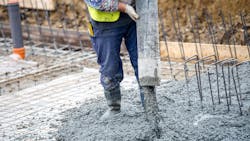Furno Materials Awarded $20M DOE Grant for Project OZ Demonstration Decarbonizing Cement
Decarbonization of cement production continues to move forward with several industry projects, including one by California-based Furno Materials which recently announced a $20 million grant from the U.S. Department of Energy (DOE).
Furno Materials is funded by DOE for a modular cement plant. It is one of 12 other projects nationwide aimed to strengthen domestic supply chains, eliminate harmful emissions, and return jobs to communities impacted by local coal plant closures from the DOE and Office of Manufacturing and Energy Supply Chains (MESC).
Project OZ based in Chicago, Illinois, will demonstrate a model for low carbon cement production, powered by Furno’s advanced kiln technology and supported by Ozinga, a concrete producer in the U.S.
While Furno will manage the construction and operation of the plant to meet sustainability, operational, and community-focused goals, Ozinga will provide industry expertise and supply all raw materials for the project, ensuring 100 percent of the cement off-take.
The project will not only enable onshoring cement production back to the U.S. but also transform the cement industry, responsible for 8 percent of global CO2 emissions, with a new model for decarbonized, modular cement production.
Furno has developed modular production units that can be built in a factory and deployed wherever required. The project will showcase that small, repeatable, standardized plants can be scaled to meet market demand and also reduce costs as well as increase flexibility, making sustainable cement production more accessible.
Furno’s technology reduces CO2 emissions by replacing traditional coal-fired kilns with high-efficiency gas-based combustion, minimizing fuel emissions by 70 percent. Additionally, Furno replaces up to 44 percent of limestone with up-cycled calcium-rich waste, which further reduces emissions.
Furno aims to replace 80 percent of traditional raw materials to achieve an 82 percent emissions reduction by 2030.
This summer, materials firm Fortera announced $85 million in Series C funding to scale up deployment of its lower carbon cement production technology. The operations are under process at Fortera’s Recarb Plant located on the CalPortland campus in Redding, California. Fortera takes the industrial carbon dioxide (CO2) from CalPortland’s kiln and uses the ReCarb technology to produce ReAct cement.
Coolbrook also is partnering with India-based JSW Group to decarbonize steel and cement production in the latter’s operations.
From Cement on the Ground to Sustainable Fuel in the Skies
EnergyTech Covers it all in the C&I Energy Transition
Subscribe to our free EnergyTech Transitions E-Newsletter
About the Author
EnergyTech Staff
Rod Walton is senior editor for EnergyTech.com. He has spent 17 years covering the energy industry as a newspaper and trade journalist.
Walton formerly was energy writer and business editor at the Tulsa World. Later, he spent six years covering the electricity power sector for Pennwell and Clarion Events. He joined Endeavor and EnergyTech in November 2021.
He can be reached at [email protected].
EnergyTech is focused on the mission critical and large-scale energy users and their sustainability and resiliency goals. These include the commercial and industrial sectors, as well as the military, universities, data centers and microgrids.
Many large-scale energy users such as Fortune 500 companies, and mission-critical users such as military bases, universities, healthcare facilities, public safety and data centers, shifting their energy priorities to reach net-zero carbon goals within the coming decades. These include plans for renewable energy power purchase agreements, but also on-site resiliency projects such as microgrids, combined heat and power, rooftop solar, energy storage, digitalization and building efficiency upgrades.
